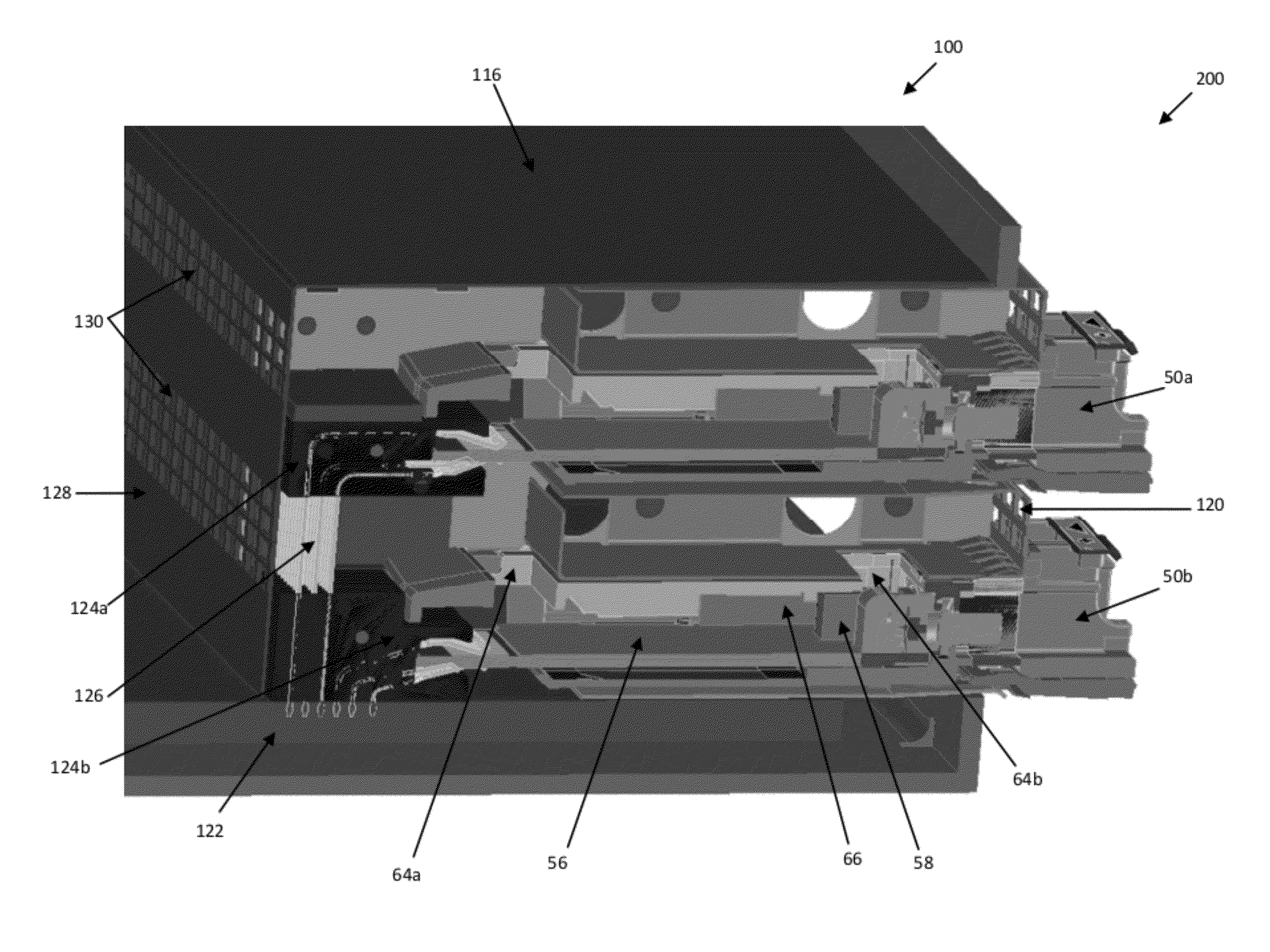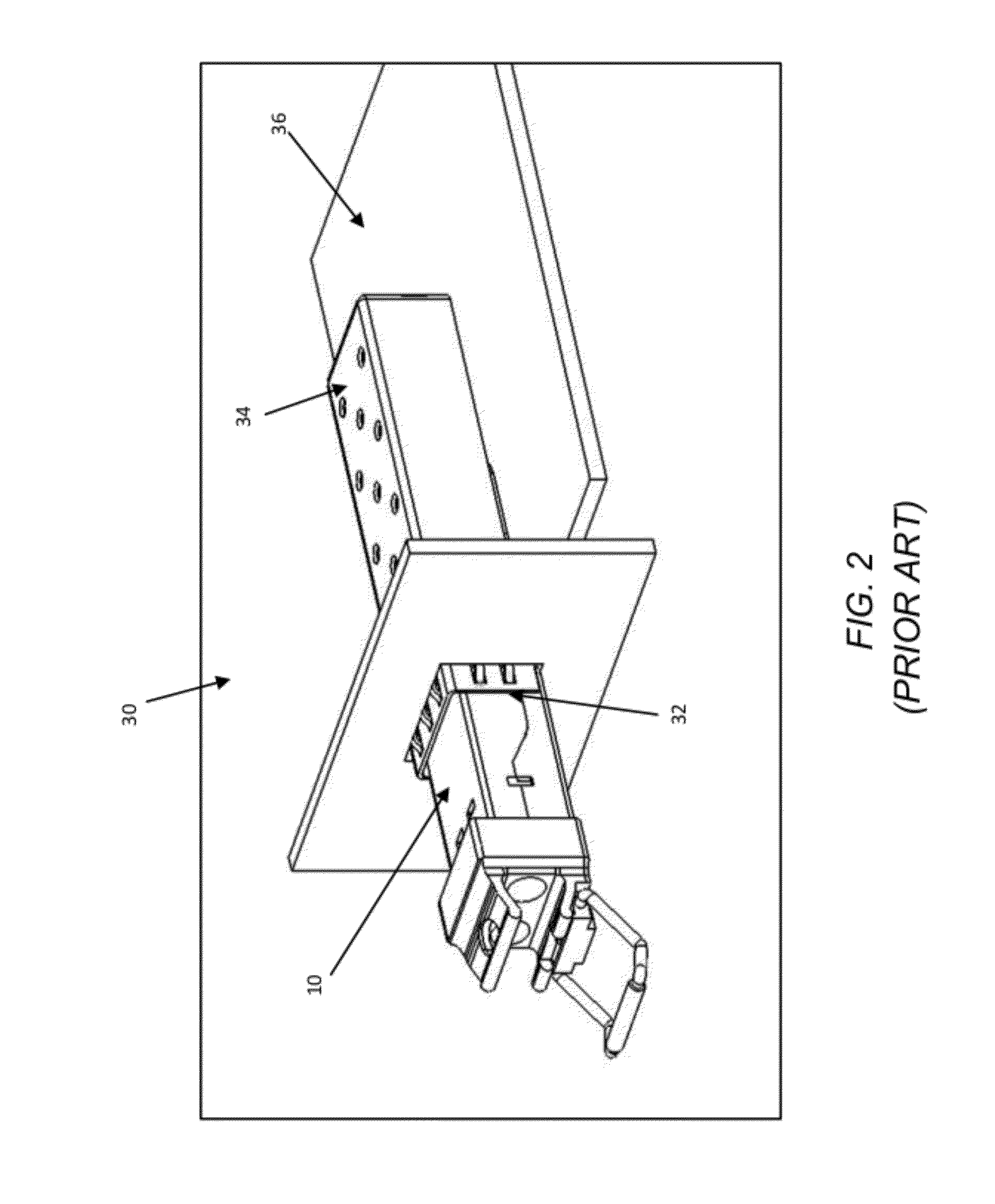Direct cooling system and method for transceivers
a technology of direct cooling and transceiver, which is applied in the direction of electrical apparatus casing/cabinet/drawer, coupling device connection, instruments, etc., can solve the problems of inefficiency of external heat sink, inability to focus cooling of internal components of transceiver modules, and design challenges of conventional external heat sinks
- Summary
- Abstract
- Description
- Claims
- Application Information
AI Technical Summary
Problems solved by technology
Method used
Image
Examples
Embodiment Construction
[0022]Referring initially to FIG. 3, an illustrative or exemplary embodiment of the invention which includes optical transceiver module 50 is shown with an elongated, generally rectangular shape defined by an elongated housing assembly 52 with a receptacle 54 disposed at a front end of housing assembly 52. Depending on the type of receptacle 54 used, the receptacle 54 can accept a single-fiber (or “simplex”) optical cable plug connector or dual-fiber (or “duplex”) optical cable plug of the various types known for use with electrical or optical systems.
[0023]Although in the exemplary embodiment the housing assembly 52 is shown as one unit (with part of the housing assembly 52 cut away in FIG. 3 for ease of understanding the optical transceiver module 50), the housing assembly 52 may be comprised of separate pieces that are connected together to form the housing for the optical transceiver module 50 (see FIG. 4). Unless specifically stated otherwise, any element described herein or a ...
PUM
 Login to View More
Login to View More Abstract
Description
Claims
Application Information
 Login to View More
Login to View More - R&D
- Intellectual Property
- Life Sciences
- Materials
- Tech Scout
- Unparalleled Data Quality
- Higher Quality Content
- 60% Fewer Hallucinations
Browse by: Latest US Patents, China's latest patents, Technical Efficacy Thesaurus, Application Domain, Technology Topic, Popular Technical Reports.
© 2025 PatSnap. All rights reserved.Legal|Privacy policy|Modern Slavery Act Transparency Statement|Sitemap|About US| Contact US: help@patsnap.com



